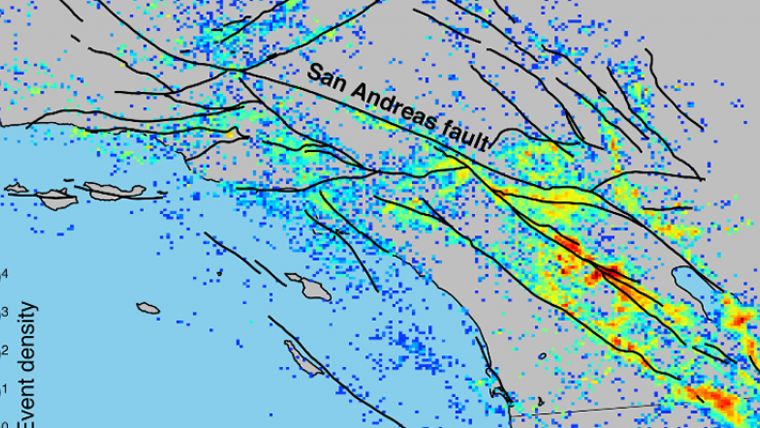Scientists Identify Almost 2 Million Previously 'Hidden' Earthquakes
Seismologists from Scripps Institution of Oceanography at the USA's University of California San Diego and colleagues have searched through 10 years' worth of Southern California seismic data with the scientific equivalent of a fine-toothed comb. As a result, they have identified hundreds of thousands of previously unidentified tiny earthquakes that occurred between 2008 and 2017.
The study, published last month online in the journal Science, expands the earthquake catalogue for that region and period of time by a factor of 10—growing it from about 180,000 recorded earthquakes to more than 1.8 million. The new data reveals that there are about 495 earthquakes daily across Southern California, occurring at an average of roughly three minutes apart—a much faster rate than seen in previous catalogues.
Tiny Temblors
This tenfold increase in the number of recorded earthquakes represents the cataloguing of tiny temblors, between negative magnitude 2.0 (-2.0) and 1.7, made possible by the broad application of a labour-intensive identification technique that is typically only employed on small scales. These quakes are so small that they can be difficult to spot amid the background noise that appears in seismic data, such as shaking from automobile traffic or building construction, for example.
"It's not that we didn't know these small earthquakes were occurring. The problem is that they can be very difficult to spot amid all of the noise", said Zachary Ross, lead author of the study and a postdoctoral scholar in geophysics at Caltech.
Close Collaboration
Ross collaborated with Egill Hauksson, a research professor of geophysics at Caltech, as well as Daniel Trugman of Los Alamos National Laboratory and Peter Shearer of Scripps, who applied a high-resolution approach to locate the newly discovered events. The work was supported by the National Science Foundation and the U.S. Geological Survey.
“Seismologists have always been blessed with an abundance of data from networks of seismic stations all over the world”, said Shearer. “Only now are our computational tools beginning to take full advantage of all the information in the seismograms.”
Template Matching
To overcome the low signal-to-noise ratio, the team turned to a technique known as template matching in which slightly larger and more easily identifiable earthquakes were used as templates to illustrate what an earthquake's signal at a given location should look like. When a likely candidate with the matching waveform was identified, the researchers then scanned records from nearby seismometers to see whether the earthquake's signal had been recorded elsewhere and could be independently verified.
Template matching works best in regions with closely spaced seismometers, since events generally only cross-correlate well with other earthquakes within a radius of about 1 to 2 miles, according to the researchers. In addition, because the process is computationally intensive, it has been limited to much smaller data sets in the past. For the present work, the researchers relied on an array of 200 powerful graphics processing units (GPUs) that worked for weeks on end to scan the catalogue, detect new earthquakes, and verify their findings.
Worth the Effort
"Seismicity along one fault affects faults and quakes around it, and this newly fleshed out picture of seismicity in Southern California will give us new insights into how that works," he said. The expanded earthquake catalogue reveals previously undetected foreshocks that precede major earthquakes, as well as the evolution of swarms of earthquakes. The richer data set will allow scientists to gain a clearer picture of how seismic events affect and move through the region, Ross said.

Value staying current with hydrography?
Stay on the map with our expertly curated newsletters.
We provide educational insights, industry updates, and inspiring stories from the world of hydrography to help you learn, grow, and navigate your field with confidence. Don't miss out - subscribe today and ensure you're always informed, educated, and inspired by the latest in hydrographic technology and research.
Choose your newsletter(s)
























